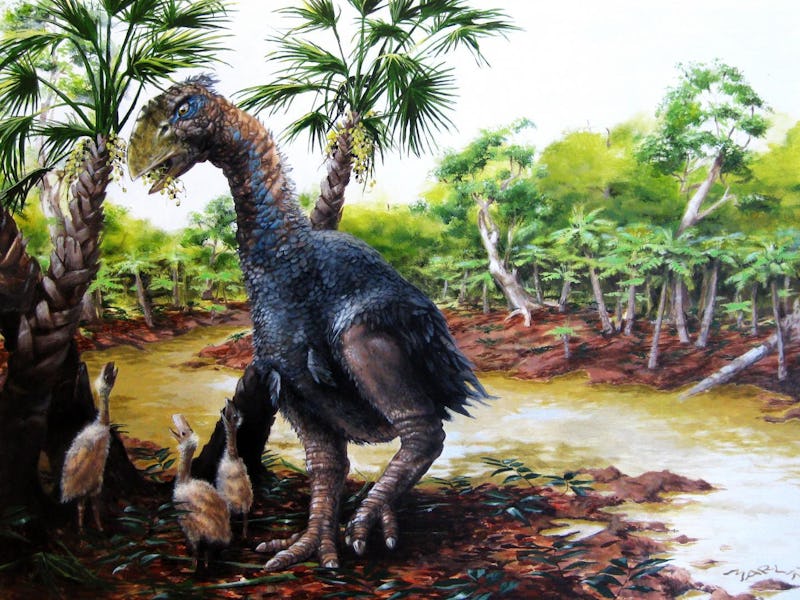50 Million Years Ago the Arctic Was a Rainforest Populated by Giant Birds
Could climate change spur the return of giant birds to the Arctic?

Twelve million years after the extinction of the dinosaurs, and 50 million years before the first humans, the Arctic was a very different place than it is today. For example, Ellesmere Island, located at the top of Canada, next to northern Greenland, was a lush rainforest delta — home to fish, turtles, crocodilians, primates, brontotheres (a relative of the rhino), and a giant prehistoric bird.
Researchers from the Chinese Academy of Sciences in Beijing and the University of Colorado, Boulder recently stumbled upon something that adds to this unusual look to the region. In a new study published in Scientific Reports, they report the discovery of a single toe bone from a Gastornis — a flightless bird that stood six feet tall and weighed hundreds of pounds.
The climate was very different back then, with winter temperatures hovering at or just above freezing, and summer temperatures in the 70s. Of course, any Ellesmere Island residents alive at the time would have still coped with months of total darkness in the wintertime, and perpetual sun in the summer.
Global temperature anomalies (in degrees Celsius) for January 2016, compared with the 1951-1980 average.
Could the High Arctic ever see such a menagerie again? While technically possible, it’s not something that human-induced climate change is going to spur any time soon. Today, average temperatures in central Ellesmere Island are about negative-two degrees Fahrenheit. Temperatures would have to soar 50 degrees before that place would support a similar ecosystem.
Climate change in the Arctic during the past few decades has indeed escalated. Killer whales are moving into new ice-free regions to snack on narwhal and beluga. Polar bears are in trouble. In January, Arctic temperatures were a shocking 7 degrees warmer than the 1951-1980 average.
Multiply that by a factor of seven, and you can start to imagine the land of the Gastornis.
If humans manage to keep global warming under 3.6 degrees Fahrenheit, as world diplomats promised in Paris late last year, the Arctic of the future will look closer to the Arctic of today than the Arctic of the Gastornis, at least on a timescale relevant to humans.
But what happens 50 million years from now is anyone’s guess. We’ve dealt with climate change poorly so far — it’s not unthinkable that future generations will continue along the same pattern. Who knows if they might have to welcome their new giant bird overlords. …